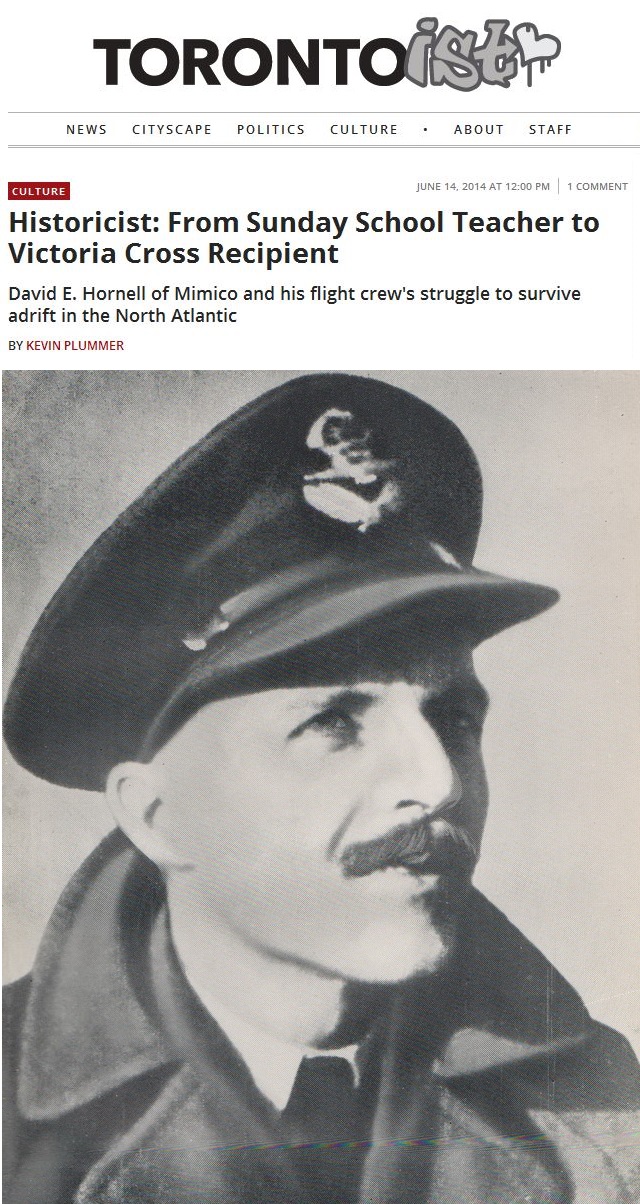
Portrait of Flight Lieutenant David E Hornell From Kenneth Hare Scott, For Valour (Peter Garnett, 1949)
With one engine gone and a wing shredded by anti-aircraft fire after an engagement with a German submarine in June 1944, Flight Lieutenant David E. Hornell crash-landed his Canso flying boat in the North Atlantic hundreds of kilometres from land, somewhere between Iceland and Norway. Forced to abandon the burning wreckage as it sank, the airman from Mimico and his crew were thrust into an incredible, 21-hour ordeal adrift in the seven-degrees-Celsius water of the North Atlantic. In the panic and disorientation of those first few minutes—when initial cold shock can cause severe hyperventilation or muscle spasms—it’s a wonder that none of the crew drowned as they made for the lone lifeboat.
Although the inflatable dinghy increased the odds of survival, the small vessel couldn’t accommodate all eight survivors. So the survivors took turns clinging to
the side of the raft for hours at a time, immersed in water so cold death could come within two hours. With their internal temperatures dropping and hypothermia setting in, they’d be going numb from the cold, their manual dexterity or ability to grip the dinghy weakening along with their physical strength to brace against the waves.
Winds grew to gale force as the hours rolled on. The over-capacity dinghy, already lying low in the water, was tossed helplessly on fierce waves. As the survivors girded themselves against the numbing cold, Hornell, who would be awarded the Victoria Cross for his actions that day, did what he could to keep his men from despairing over the long odds of rescue. And the former Sunday school teacher prayed that rescuers would spot their tiny lifeboat on the vast expanse of the ocean. Read More